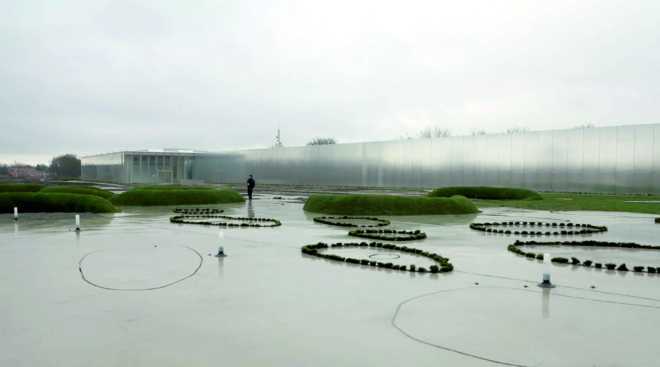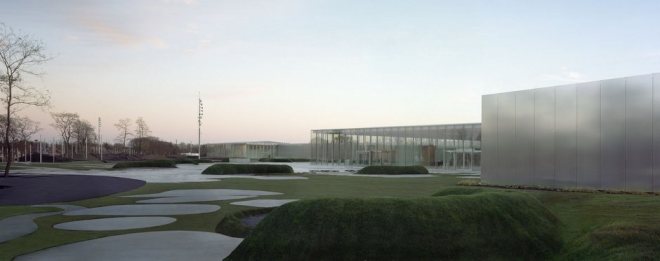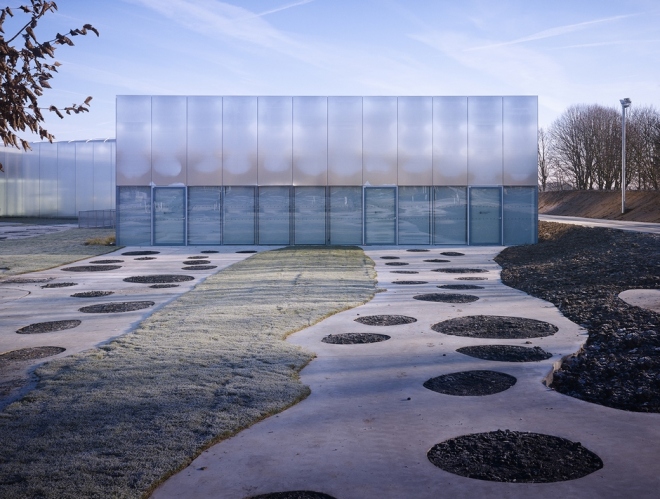Mosbach’s unique education in the life sciences that was precursor to her training in landscape informs and nourishes her aesthetic approach. The ground at Louvre-Lens is designed as a sensitive surface.
The intention is to expose this surface to variations in time, playing with relationships between materials through the processes of contagion, superimposition, and coverings. It is about drawing the ground via flows and traversing different environments in the park.
An existing wood at the edge of the site yields to a large clearing of meadow. which then becomes a mix of hard planted surfaces near the building. The ground is locally perforated to allow water to infiltrate; it folds over to become seating at the entrance to the museum: it protects the building from the intrusion of vehicles and it dips to accommodate a pool. Around the building, desirable mom exists as the first pioneer stratum, collecting atmospheric dust and preparing for successive ecological cycles. For Mosbach, the way the park responds to temporal and ecological dynamics is multidimensional and becomes a new heritage for the site.
Thierry Kandjee & Sarah Hunt, The Invisible Made Present (2013)


 Catherine Mosbach, Louvre-Lens Museum Park (2012)
Catherine Mosbach, Louvre-Lens Museum Park (2012)
